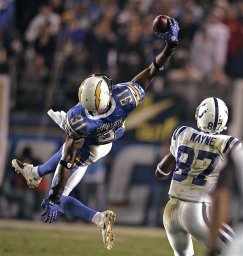Australia gives the US an unwelcome present
As we all recall, the influenza season in the Southern Hemisphere last summer was pretty severe. You can Google, or search "Australia" on my Blogsite for past stories on the 2007 epidemic Down Unda. Suffice it to say that it was pretty bad, with headlines crowing "Worried Mums Search for Tamiflu," stuff like that.
A vestige of that Summer 2007 epidemic has now reached our shores. Labeled A/H3N2/Brisbane-like, the virus was too new to be a part of the WHO's travalent (3-flus) cocktail for the annual vaccine. But it has crossed the Equator and is now infecting Americans. This thwarts the ability of the seasonal vaccine to do 100% of its work.
For the uninitiated: Each year, usually around February and March, the WHO holds a little party. All the influenza rock stars from around the world get together and try to predict the next season's Super Bowl winner in each hemisphere, based on surveillance. Think of it as disease scouting, and the scouts all get together and talk about which virus has picked up the best players via free agency, trades with other teams, etc.
 They get to pick two teams from the Influenza A conferences H3N2 and H1N1, plus one team from Influenza B (let's call it the Canadian Football League winner, in deference to my buddy Crof). Usually, the WHO's people are pretty good at it. But surprises can occur, and there really is little they can do to overcome those surprises. Sort of like predicting that LaDianian Tomlinson and Phillip Rivers would both be ineffective in the AFC Championship Game (while my friend Antonio Cromartie played a helluva game, as usual!). What were the chances of THAT?
They get to pick two teams from the Influenza A conferences H3N2 and H1N1, plus one team from Influenza B (let's call it the Canadian Football League winner, in deference to my buddy Crof). Usually, the WHO's people are pretty good at it. But surprises can occur, and there really is little they can do to overcome those surprises. Sort of like predicting that LaDianian Tomlinson and Phillip Rivers would both be ineffective in the AFC Championship Game (while my friend Antonio Cromartie played a helluva game, as usual!). What were the chances of THAT?
But I digress. From the AP story:
Each year's vaccine contains protection against three influenza strains — two members of the nasty Type A family, an H1N1 and an H3N2 version, plus a milder Type B — that experts predict will cause the most illness.
So far this year, H1N1 is causing the vast majority of disease, Gerberding said.
But a new H3N2 strain emerged near the end of Australia's flu season, too late to be included in the U.S. vaccine. Called H3N2/Brisbane-like, it is now sickening Americans, although it still is making for a small proportion of cases, Gerberding cautioned.
Some 132 million doses of vaccine were produced this year, more than ever before. It's too early to know how many people got vaccinated, but Gerberding said a record number of doses were distributed to doctors and other vaccine providers — and that there is still some available.
CDC has found flu affecting most of the country but widespread outbreaks in Alaska, Colorado, Hawaii, Kansas, Massachusetts, Mississippi, New Mexico, New York, Pennsylvania, Texas and Virginia.
The full story is at: http://news.yahoo.com/s/ap/20080202/ap_on_he_me/flu_season . And can you tell I am going to miss football season?

Reader Comments (5)
Scott, for clarity sake, the Spanish Influenza of 1918 was a H1N1 right? So the one going around now is a different variant?
Yes, the H1N1 that is part of the trivalent vaccine is a distant, distant, distant cousin of the 1918 pandemic strain. The H1N1 that circulates today is believed to have been the result of a Soviet lab accident in 1977. The strain was called the "Russian Flu" and caused a mini-pandemic. That is, if you were born after 1957, you had no immunity against H1N1, which had been replaced by H2N2 and H3N2, respectively, in the King of the Mountain competition that Influenza A plays. It was a kind of "boomer pandemic."
it's not fair to "blame" Australia for the emergence
of the Brisbane strain.
It is not new, it was dominant in USA last season already.
The press quoted Dr. Gerberding on the origin of Brisbane-like, and I must assume she is on top of things. Not to dispute you, but Gerberding was very specific in her prose regarding why this was not picked up in the trivalent formula.
Gerberding's CDC reported, that last season only 25% of US-H3N2-viruses matched the vaccine
http://www.cdc.gov/flu/weekly/weeklyarchives2006-2007/weekly20.htm
What Gerberding said in that quote, which you mention, is not exactly wrong, although
the Brisbane virus is probably not very much "new", antigenically.
I won't call it a "new strain" or "emerged" or even give it the name
"Brisbane-strain". It's not much different from last year's H3N2.
So, is this an attempt to divert from last year's and this year's
bad H3N2-match and search for an explanation, which doesn't exist ?